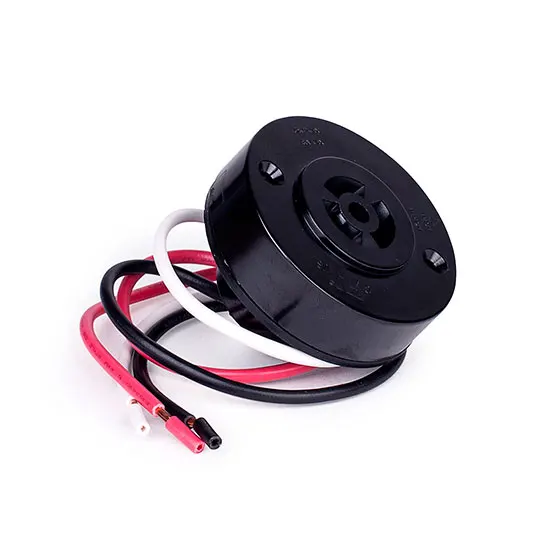

Light, an essential element in our lives, not only illuminates our surroundings but also plays a crucial role in enhancing our productivity, mood, and overall well-being. In the realm of electrical engineering, the synergy between electrical and photocontrol has revolutionized the way we perceive and utilize light. This blog delves into the intricate relationship between electrical systems and photocontrol technology, exploring their applications, benefits, and future prospects.
Traditional lighting systems, predominantly reliant on incandescent or fluorescent bulbs, have long been the norm. However, with advancements in light-emitting diode (LED) technology, a paradigm shift has occurred. LED lighting offers significant advantages over conventional methods, including energy efficiency, durability, and versatility in design. The integration of electrical components with LED fixtures has paved the way for more sophisticated lighting solutions tailored to specific needs and preferences.
Photocontrol technology harnesses the power of sensors and automation to regulate lighting based on ambient conditions. These sensors detect changes in natural light levels and adjust artificial lighting accordingly, optimizing energy consumption while maintaining adequate illumination levels. From simple daylight harvesting systems to complex smart home setups, photo control technology offers a spectrum of options to enhance lighting efficiency and convenience.
One of the primary benefits of photocontrol technology is its contribution to energy conservation. By dynamically adjusting lighting levels in response to natural light fluctuations, unnecessary energy expenditure is minimized, leading to substantial cost savings and reduced environmental impact. Moreover, photocontrol systems enhance occupant comfort and productivity by ensuring consistent and appropriate lighting conditions throughout the day, regardless of external factors.
The application of photo control technology spans across diverse sectors, from commercial buildings to residential complexes and public spaces. In commercial settings, intelligent lighting systems not only reduce operational expenses but also create aesthetically pleasing environments conducive to business activities. In residential areas, smart lighting solutions offer residents greater control over their living spaces, enhancing comfort and convenience while promoting energy efficiency. Public spaces such as parks, streets, and transportation hubs benefit from photo control technology by improving safety and visibility while minimizing light pollution.
Several real-world examples demonstrate the efficacy of photocontrol technology in different contexts. For instance, a retail chain implemented a comprehensive lighting control system across its stores, resulting in significant energy savings and an enhanced customer experience. Similarly, a residential community adopted smart lighting solutions, allowing residents to customize lighting settings according to their preferences while reducing electricity consumption. These case studies underscore the versatility and practicality of photocontrol technology for diverse applications.
As we journey into the future of lighting technology, several key developments are poised to redefine the landscape of electrical and photo control.
One such trend is the integration of Internet of Things (IoT) capabilities into lighting systems. By connecting luminaires to a network, IoT-enabled lighting can communicate with other smart devices and sensors, allowing for seamless integration and enhanced functionality. For example, lighting fixtures equipped with occupancy sensors can interact with heating, ventilation, and air conditioning (HVAC) systems to optimize energy usage based on occupancy patterns in a building. Additionally, IoT-enabled lighting platforms can provide valuable data insights through analytics, enabling facility managers to make informed decisions regarding energy management and space utilization.
Advanced sensor technologies are also driving innovation in photocontrol systems. From motion sensors and occupancy detectors to daylight harvesting sensors, these devices play a crucial role in optimizing lighting performance and energy efficiency. By accurately sensing changes in environmental conditions, such as occupancy levels or natural light levels, these sensors enable precise control over lighting output, ensuring that energy is only consumed when needed.
Furthermore, the integration of machine learning algorithms holds immense potential for enhancing the intelligence and adaptability of photocontrol systems. By analyzing vast amounts of data collected from sensors and user interactions, machine learning algorithms can continuously optimize lighting settings to meet evolving needs and preferences. This adaptive approach not only improves energy efficiency but also enhances user comfort and satisfaction by delivering personalized lighting experiences.
As we embrace these advancements, it is essential to remain mindful of the broader societal and environmental implications of our lighting choices. Sustainable lighting design principles, such as minimizing light pollution, maximizing energy efficiency, and prioritizing human-centric lighting solutions, should guide our efforts towards creating lighting environments that are not only functional and aesthetically pleasing but also environmentally responsible and supportive of human well-being.
In conclusion, the journey towards mastering light through the integration of electrical and photo control technology is an ongoing endeavor fueled by innovation, sustainability, and a commitment to enhancing the quality of human experiences. By harnessing the power of automation, connectivity, and data-driven intelligence, we can illuminate our world in ways that are efficient, adaptable, and in harmony with the natural environment. As we continue to push the boundaries of what is possible, the future of lighting holds boundless opportunities for creativity, efficiency, and sustainability.
Email format error
Email cannot be empty
Email already exists
6-20 characters(letters plus numbers only)
The password is inconsistent
Email format error
Email cannot be empty
Email does not exist
6-20 characters(letters plus numbers only)
The password is inconsistent